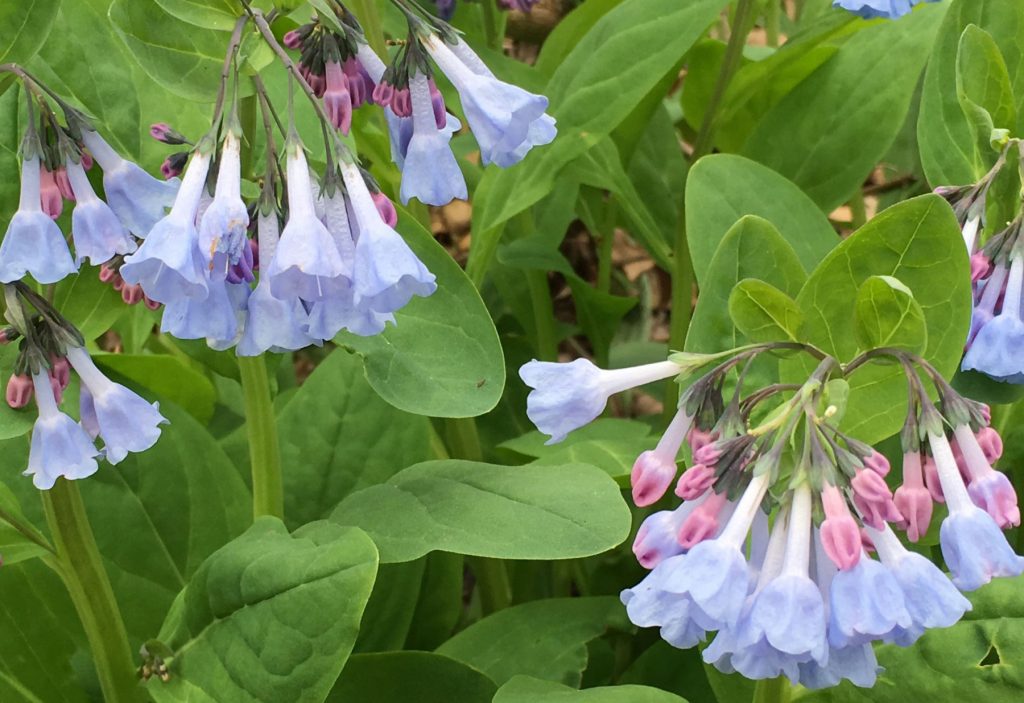
This is just about my favorite time of year in the garden, because it’s time for wildflowers. They’re blooming in the woods where I take long walks, but they’re also in bloom in my yard.
I don’t live in the woods—far from it. Most of my garden grows in the shade between a four-story apartment building and a two-story house, with a row of trees and a six-foot fence running between them. The space only gets a reasonable amount of sun for a few weeks in the early spring, before the trees leaf out.
That makes it similar, in terms of light exposure, to the Midwestern woods, where sunlight reaches the forest floor only while the trees are still bare. Some plants have evolved to take advantage of that brief window of light. They emerge in March and April and use the sun’s energy to fuel their blooms and seed-setting. By the time the trees leaf out, casting the forest-floor plants into shade, their reproductive business is done. Some will keep their green leaves for several more months, but many will simply go dormant, letting their foliage decay and resting their roots underground until next spring. They’re called “spring ephemeral wildflowers,” because they flower and then vanish.
I grew up tramping the Illinois and Indiana woods with my mother in the spring, watching the parade of the wildflowers: In March, pale purple sharp-lobed hepatica (Hepatica acutiloba) and white bloodroot (Sanguinaria canadensis). Toward April, tiny pink-striped spring beauty (Claytonia virginica), oddly charming Dutchman’s breeches (Dicentra cucullaria), graceful trout lily (Erythronium albidum), and sky-blue Virginia bluebells (Mertensia virginica). In May, columbine (Aquilegia canadensis), with blooms like little pink-and-yellow rocket ships; waxy white flowers of mayapple (Podophyllum peltatum) hiding beneath an awning of umbrellalike leaves; stately large white trillium (Trillium grandiflorum); jaunty yellow celandine poppies (Stylophorum diphyllum) striding everywhere.
Of course, once I became a gardener I wanted to bring them all home. But it hasn’t been easy.

For one thing, although my current garden offers light conditions not unlike those in the woods, the other conditions are totally different. These plants evolved for the forest floor, where hundreds of years of decaying leaves have left light, fluffy loam and an underground world of fungi and microorganisms that enrich the soil for plant roots. My soil is not native topsoil but sticky, dense clay mixed with construction debris—the current building is not the first on the site. Only by enriching the soil in my wildflower patches with bushels of fallen leaves before I plant, and by mulching over every winter with a thick layer of more leaves, have I been able to create small areas that are reasonably hospitable to these finicky native plants.
Another problem is the other plants. More than a century of gardening (not just by me) have infested the yard with aggressive, choking, ineradicable non-native groundcovers such as English ivy (Hedera helix) and yellow archangel (Lamiastrum galeobdolon). The delicate native wildflowers would have no chance against them—just as they are so often choked out by these and other invasive plants in the natural woodlands—if I didn’t spend hours yanking the ground covers up and digging them out.
The biggest difficulty is where to get the wildflowers. It’s absolutely unethical to take them from the wild, unless it’s a rescue situation, where the woods are about to become a construction site. I’ve rescued spring beauty and Jack-in-the-pulpit from the shadow of bulldozers. But the far better way is to seek them out from native plant sales and specialty nurseries that certify they don’t collect from the wild.
It’s been decades since I set out to bring a little bit of the woods to my yard. I’ve learned a lot about these little wild things (bloodroot spreads happily, but for God’s sake don’t try to divide the hepatica). I’ve had successes (14 white trillium blooms last year!) and failures (yellow trout lily flatly refuses to grow here). But at this time of year, when the tiny spring beauty flowers begin to twinkle along the ground, when parts of my yard chime with a faint echo of the woods that once carpeted my neighborhood and the trails I have hiked all my life, I love my garden the most.


